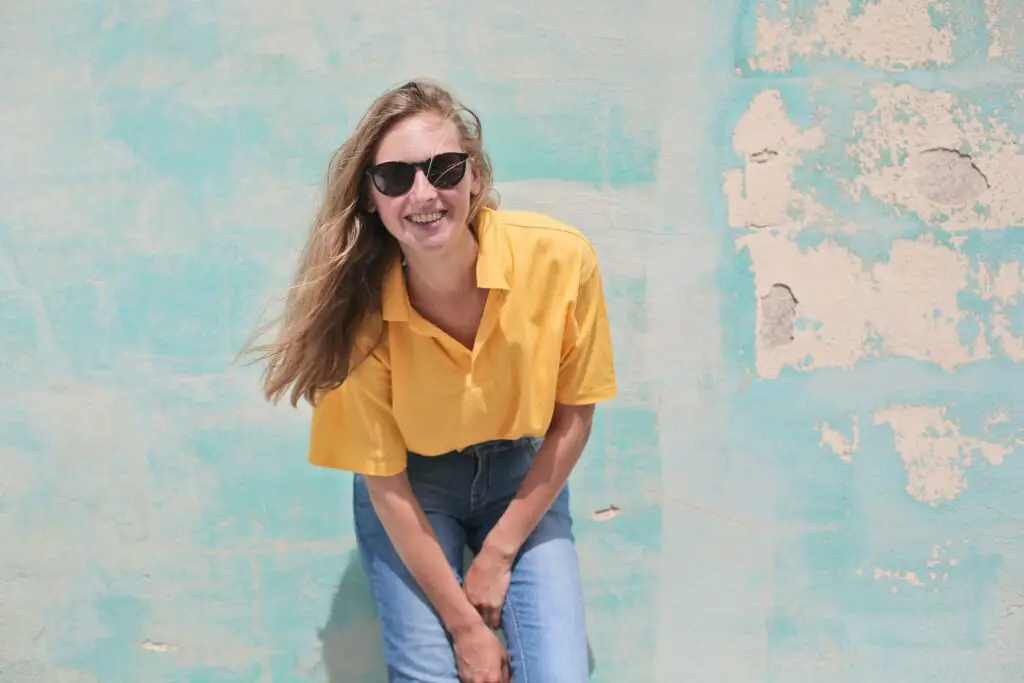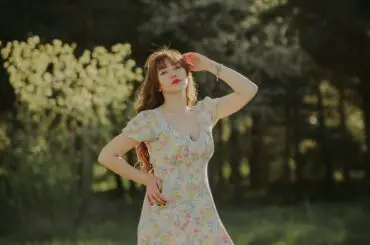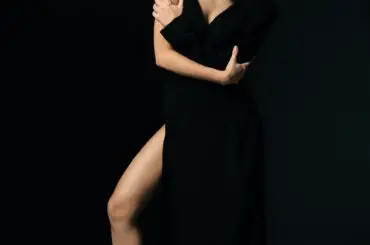Contents
What is the Difference Between a Shirt and Blouse?
If you’ve ever found yourself staring at your wardrobe, wondering whether to don a shirt or a blouse for the day, you’re not alone. The terms “shirt” and “blouse” are often used interchangeably, but there’s more than meets the eye when it comes to these two wardrobe staples. In this article, we’re about to embark on a sartorial journey that will help you distinguish between a shirt and a blouse, with plenty of examples to guide you along the way.
Historical Context: The Roots of Style
Before we delve into the differences between shirts and blouses, let’s take a moment to appreciate their historical origins.
Shirts have been part of human attire for centuries. Ancient Egyptians and Romans wore garments that resemble the modern-day shirt. Initially, these were undergarments, but as time went on, they emerged as outerwear. In the 18th century, they became symbols of freedom and a departure from the elaborate clothing of the past.
Blouses, on the other hand, have a more recent history. The term “blouse” first came into fashion in the 19th century, particularly among women. Blouses represented a move away from the constraining fashion of the time, which featured corsets and petticoats. They were airy and liberating.
Now, let’s delve into the characteristics that set shirts and blouses apart.
Characteristics of Shirts and Blouses
Shirts
Fabric and Material: Shirts come in a wide array of materials, ranging from the comfortable cotton t-shirt to the rugged denim work shirt, and even luxurious silk for formal dress shirts. Here’s an example: A crisp, white dress shirt is the epitome of formal wear and is often worn with a tie and suit.
Fit and Silhouette: Shirts are known for their straight and structured fit. For instance, a well-fitted button-down shirt, often paired with a tie, exudes professionalism, making it a go-to choice for job interviews and formal events.
Necklines: Most shirts come with collars, each serving a different purpose. A classic example is the dress shirt with a point collar, which is a staple for business attire.
Collars and Cuffs: Shirts are often equipped with button-down collars and cuffs, which give them a neat and polished appearance. For instance, a button-down oxford shirt showcases a smart and sophisticated look, suitable for office wear.
Sleeves: Shirts offer a variety of sleeve lengths, from long sleeves to short sleeves. A short-sleeved Hawaiian shirt is a casual example, perfect for a relaxed summer day or a tropical vacation.

Typical Styles: Shirts come in an array of styles, including dress shirts for formal occasions, casual shirts for everyday wear, and t-shirts for lounging or informal outings.
Occasions for Wearing: Shirts are incredibly versatile and can be dressed up or down. You can wear a dress shirt with a suit for a wedding, opt for a casual shirt for a weekend gathering, or throw on a t-shirt for a trip to the beach.
Blouses
Fabric and Material: Blouses are known for their lightweight and delicate fabrics, such as chiffon, silk, or lace. For example, a silk chiffon blouse with lace details is perfect for a romantic dinner or a special date night.
Fit and Silhouette: Blouses typically have a softer and more feminine fit. They often feature darts and gathers to create a tailored look while maintaining comfort. An example is the peplum blouse, which cinches at the waist and flares out, accentuating an hourglass figure.
Necklines: Blouses tend to feature softer necklines, such as V-necks, scoop necks, or boat necks. A V-neck blouse can be both elegant and flattering, suitable for various occasions.
Collars and Cuffs: While some blouses have collars, they are often smaller and less structured. Cuffs may be delicate or ruffled, lending a touch of charm. A ruffled-collar blouse adds a whimsical touch to an outfit, making it perfect for a garden party or a brunch with friends.
Sleeves: Blouses offer a range of sleeve styles, from cap sleeves to bell sleeves. An example is a blouse with bell sleeves, which adds a bohemian touch to your ensemble, ideal for a music festival or a relaxed afternoon outing.
Typical Styles: Blouses come in an assortment of styles, including peplum blouses, tunic blouses, and ruffled blouses. A tunic blouse, often longer in length and flowing, is an example that combines style and comfort, making it a versatile choice for many occasions.
Occasions for Wearing: Blouses are a go-to for occasions that require a touch of sophistication and femininity. Whether you’re heading to the office, a formal event, or a romantic dinner date, a well-chosen blouse can make a statement.
Gender Considerations
It’s worth noting that, in contemporary fashion, the lines between shirts and blouses have become more fluid, with greater inclusivity and diversity in design.
Men’s Shirts vs. Women’s Blouses
Traditionally, men’s shirts focused on practicality and structure, while women’s blouses emphasized style and design. However, the fashion landscape is evolving, and examples abound of men incorporating softer fabrics and styles into their wardrobe, blurring the lines between shirts and blouses.
Women’s Shirts vs. Women’s Blouses
Women’s shirts offer versatility in style, but blouses generally lean toward elegance and femininity. However, women can confidently don shirts with masculine tailoring or opt for blouses with feminine detailing.
Historical Gender Differences
Historically, the distinction between shirts and blouses was more defined. Still, as fashion becomes more inclusive and gender roles become less rigid, people are free to express themselves through clothing without being confined by traditional boundaries.
Styling Differences
The choice between a shirt and a blouse can significantly influence your overall style. Let’s explore how to style both with some examples to inspire your fashion choices.
How to Style a Shirt
- Business Chic: For a classic and professional look, you can wear a well-fitted button-down shirt with a tailored suit, complete with a tie. This ensemble is perfect for job interviews or business meetings.
- Casual Comfort: A casual shirt, like a polo shirt paired with chinos, is great for a relaxed day out. Throw on some sneakers, and you’re ready for a picnic or a leisurely stroll in the park.
- Street Style: Want to embrace a trendier style? Try an oversized shirt, perhaps in a bold plaid or denim fabric, worn as a dress with thigh-high boots. This edgy look is ideal for a music concert or a day of urban exploration.
- Layered Look: You can layer a flannel shirt over a graphic t-shirt and distressed jeans for a trendy, grunge-inspired outfit. Finish with a beanie and combat boots for an effortlessly cool appearance.
How to Style a Blouse
- Elegant Evening: A blouse with intricate lace detailing can be paired with a sleek pencil skirt and high heels. Add statement earrings, and you’re ready for a sophisticated evening out or a formal event.
- Daytime Chic: A flowing tunic blouse is perfect for daytime outings. Combine it with leggings, ankle boots, and a wide-brimmed hat for a boho-chic look that’s ideal for brunch or a shopping spree.
- Retro Vibes: Embrace a vintage aesthetic with a blouse featuring puff sleeves. Tuck it into high-waisted, wide-leg pants for a 1980s-inspired look. Finish with block-heeled shoes and retro sunglasses.
- Garden Party: A blouse with a ruffled collar is a charming choice for a garden party or an outdoor gathering. Pair it with a floral skirt and espadrille wedges for a feminine and romantic appearance.
Cultural Variations: Language and Attitudes
Fashion can be a window into cultural differences and nuances. The terms “shirt” and “blouse” might carry distinct connotations in various parts of the world.
Differences in Terminology Across Languages
In some languages, the words used for “shirt” and “blouse” may not have a direct translation. For example, in French, “chemise” can refer to both shirts and blouses, highlighting the language’s fluidity in distinguishing between the two.
Cultural Attitudes Towards Shirts and Blouses
Cultural attitudes play a significant role in how shirts and blouses are perceived. In some cultures, shirts may be associated with conservatism and formality, while blouses are seen as more expressive and fashionable.
Fashion Trends
Fashion is ever-evolving, and trends continuously influence the designs of both shirts and blouses.
Contemporary Trends in Shirts
Shirts have undergone a transformation, embracing a broad range of styles. For instance, oversized shirts have become increasingly popular, offering a relaxed and gender-neutral look. These versatile pieces can be worn in a variety of settings, from a casual coffee date to a night out with friends.
Contemporary Trends in Blouses
Blouses are no longer confined to traditional designs. Today, you’ll find a spectrum of options, from blouses with dramatic sleeves, asymmetrical cuts, to bold prints. The rise of gender-inclusive fashion has expanded the horizons of blouse design, making them accessible to anyone who wishes to explore their elegance.
Practical Tips
Now that you’re equipped with knowledge about shirts and blouses, let’s conclude with some practical advice to help you navigate the world of fashion.
How to Choose Between a Shirt and Blouse
Consider the occasion, your personal style, and what makes you feel confident. Whether you opt for a classic shirt or an elegant blouse, the choice should align with your preferences and the event you’re attending.
Wardrobe Essentials
Diversity in your wardrobe is key. Invest in a mix of shirts and blouses, ensuring you have pieces that can be dressed up or down. A well-rounded wardrobe will serve you well for a variety of occasions.
Maintenance and Care
Different fabrics require different care. It’s essential to follow care instructions to ensure your garments remain in great condition. Regular maintenance will extend the life of your shirts and blouses.

Conclusion
The distinction between a shirt and a blouse may seem subtle, but it’s a difference that can significantly impact your style choices. By understanding their historical context, characteristics, and cultural variations, you’ll be better equipped to make informed decisions about what to wear. So, whether you favor the classic elegance of a shirt or the graceful charm of a blouse, embrace your unique style with confidence. Fashion is a canvas for self-expression, and your choice is a stroke in the masterpiece of your identity.
So, when you open your wardrobe next time, consider your personal style, the occasion, and your mood. Are you leaning towards the classic shirt or the elegant blouse? Your clothing choices are an artistic expression of who you are, and the canvas is yours to paint!





